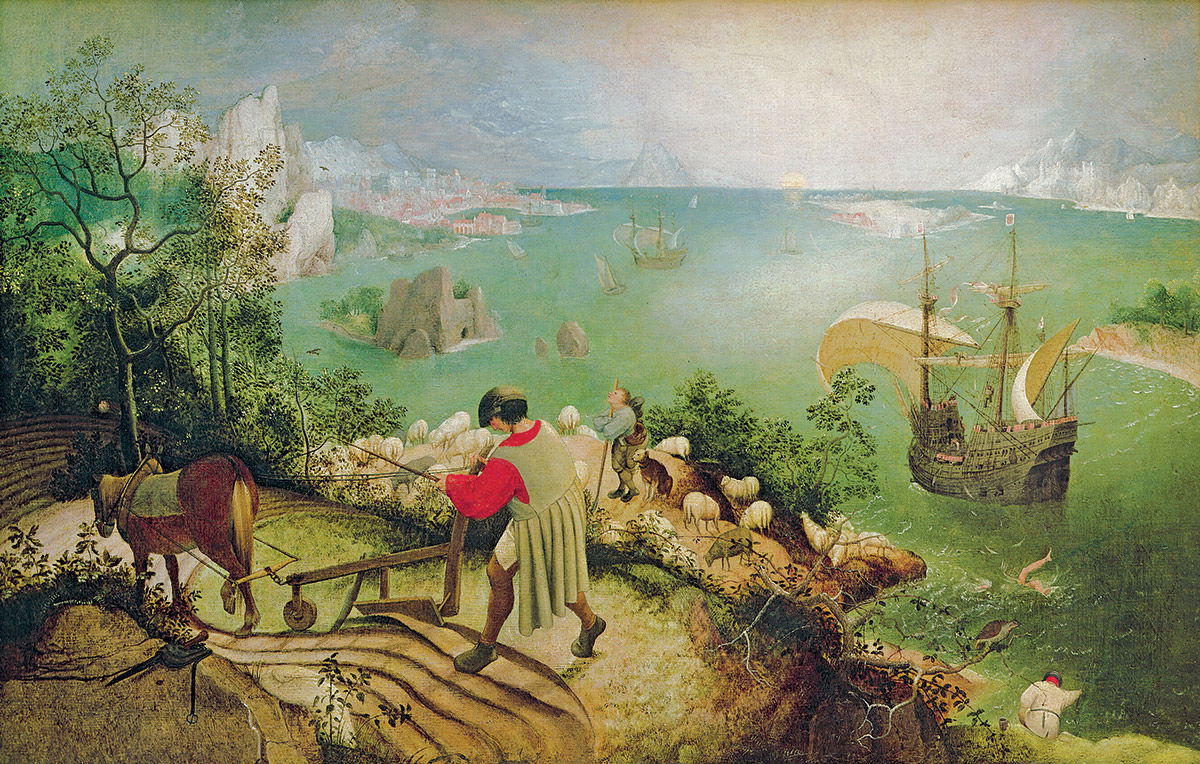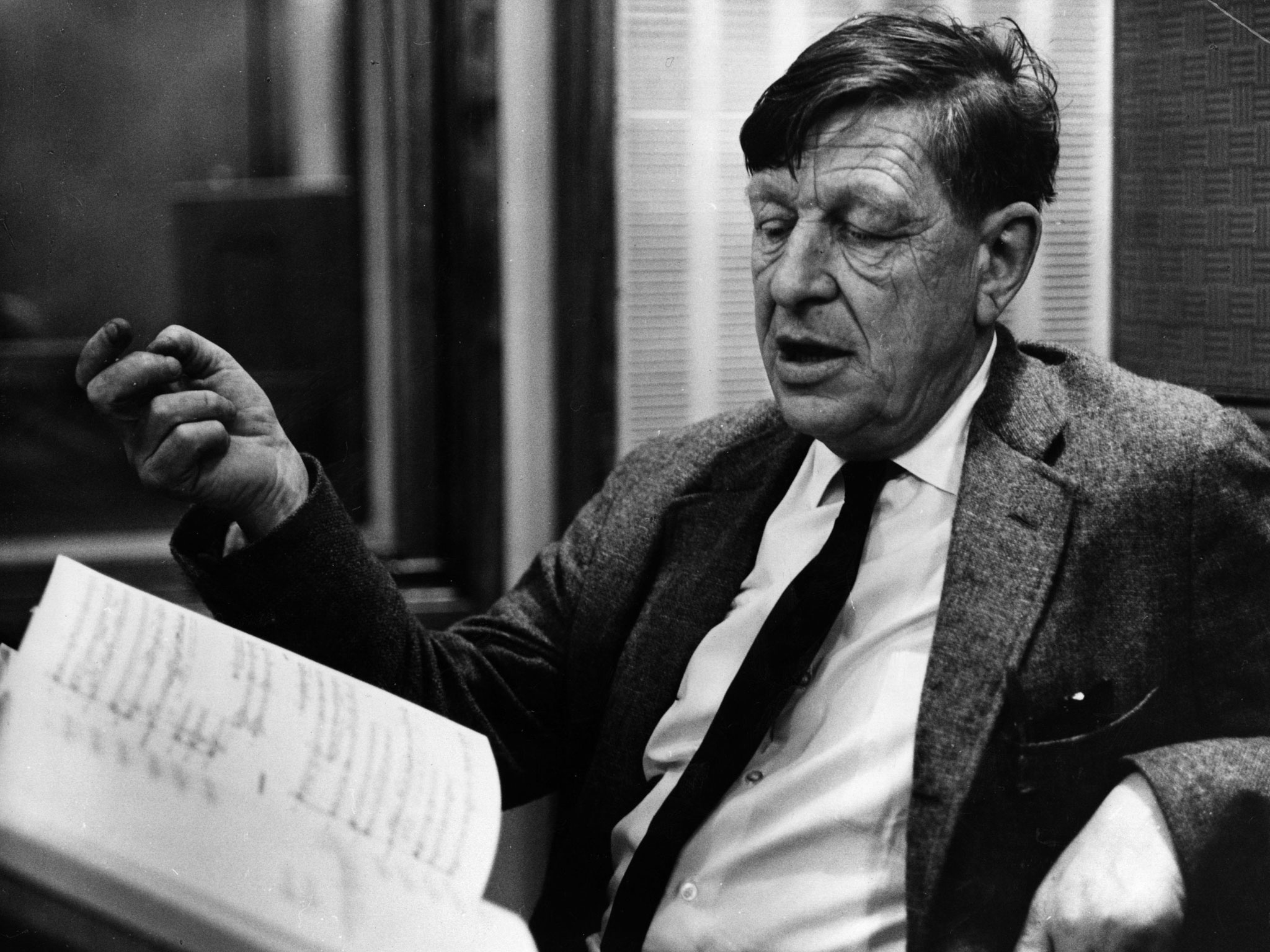I came across this interesting reaction to an explication of W. H. Auden’s great poem “Musee des Beaux Arts”. The retort was from Lee Segal reacting in his article in City Journal, “Misreading Auden: About suffering, and art, the NewYork Times is usually wrong,” against an article in The New York Times by Elisa Gabbert interpreting Auden’s poem, “A Poem (and a Painting) About the Suffering That Hides in Plain Sight.”
Now to be fair, I cannot read Gabbart’s initial essay since I do not subscribe to the Times, and my number of free views to one of their articles has exceeded their policy, so I can only go by Segal’s characterization of her interpretation. But perhaps you can read the Times article, and, if so, please correct me if I am unfair. I found the exchange interesting, mainly because I happen to love this poem. But set aside Segal's polemic against the politically Liberal point of view from the newspaper and the author. I don't want to get into that. Let me give you my view.
First
the poem, and I can publish it since it’s in the public domain.
Musee des Beaux Arts
W. H. Auden
About suffering they were
never wrong,
The old Masters: how well
they understood
Its human position: how
it takes place
While someone else is
eating or opening a window or just walking dully along;
How, when the aged are
reverently, passionately waiting
For the miraculous birth,
there always must be
Children who did not
specially want it to happen, skating
On a pond at the edge of
the wood:
They never forgot
That even the dreadful
martyrdom must run its course
Anyhow in a corner, some
untidy spot
Where the dogs go on with
their doggy life and the torturer's horse
Scratches its innocent
behind on a tree.
In Breughel's Icarus, for
instance: how everything turns away
Quite leisurely from the
disaster; the ploughman may
Have heard the splash,
the forsaken cry,
But for him it was not an
important failure; the sun shone
As it had to on the white
legs disappearing into the green
Water, and the expensive
delicate ship that must have seen
Something amazing, a boy
falling out of the sky,
Had somewhere to get to
and sailed calmly on.
I
really can’t do better than the short explanation of the poem given in
Wikipedia’s entry.
Auden's free verse poem is divided into two parts, the first of which describes scenes of "suffering" and "dreadful martyrdom" which rarely break into our quotidian routines: "While someone else is eating or opening a window or just walking dully / along." The second half of the poem refers, through the poetic device of ekphrasis, to the painting Landscape with the Fall of Icarus (c. 1560s), at the time thought to be by Bruegel, but now usually regarded as an early copy of a lost work. Auden's description allows us to visualize this specific moment and instance of the indifference of others to a distant individual's suffering, inconsequent to them, "how everything turns away / Quite leisurely from the disaster ... the white legs disappearing into the green." The disaster in question is the fall of Icarus, caused by his flying too close to the sun and melting his waxen wings.
So there are two parts to the poem, both which are expressions on the theme that humanity just moves on from tragedies all around us. The Wikipedia entry states the poem as giving us instances “of the indifference of others to a distant individual's suffering, inconsequent to them.” The entry goes on to say the poem is in two parts. The first part give some random, mundane examples of tragedies we seem to ignore, and the second part, an “ekphrasis,”—that is a description of a work of a visual art—of “Landscapewith the Fall of Icarus” by Pieter Bruegel the Elder.
So before I get to Segal and Gabbert, here is Bruegel’s painting.
For those that don’t get the allusion, the painting references the ancient Greek myth of Icarus where Daedalus, a master craftsman, builds wings for him and his son Icarus to escape from the island of Crete through flight. But Icarus being young and headstrong flies too high and the sun melts the wings and he plunges into the sea to his death. In the lower right of the painting you can see Icarus feet just before he submerges.
So
I think one could summarize the difference between Segal’s and Gabbert’s
interpretations is over the word “indifference.” Segal states Gabbert’s interpretation of the
poem with this paragraph.
No work of art can be summed up in a series of categorical statements about its “message,” but Gabbert tells us that Auden’s poem is a straightforward exposure of people who let bad things happen—she is perhaps thinking of Ukraine—and do nothing. “Ignoring [human suffering],” she writes, in a summary of Auden’s intentions in writing the poem, “is the most natural thing in the world. It is also a moral error.”
He
later chides her for confusing the theme of the painting with the theme of the
poem.
Gabbert does not refer to Auden’s religious beliefs, and when she does take up the poem’s allusions to Christian motifs, she gets them wrong. “The painting,” she writes, both confusing the poem with the painting and the painting’s own possible meanings, “is about the fraught relation between attention and disaster—as is the poem: Something’s only a disaster if we notice it.” Yet in the painting, Icarus’s fall is still a disaster, though no one sees it. And in the poem, Christ’s “dreadful martyrdom” and Icarus’s fall are still disasters, though no one sees them. Auden even refers to the boy’s fall as a “disaster.”
Segal’s
interpretation of the painting is subtly different. The indifference is not a callousness nor
uncaring but an acceptance.
The poem is not about the
“fraught relation between attention and disaster,” whatever that means. It is
about disaster and suffering happening in the midst of lives untouched by
disaster and suffering. Auden writes, “About suffering they were never
wrong/The Old Masters: how well they understood its human position; how it
takes place/While someone else is eating or opening a window or just walking
along.” The poem describes how even Christ’s torture happened obscurely,
mundanely: “even the dreadful martyrdom must run its course . . . in some
untidy spot/Where the dogs go on with their doggy life and the torturer’s horse/Scratches
its innocent behind on a tree.”
Gabbert believes that the Old Masters, in the manner of editorial writers, were bothered by the fact that suffering was “easy to ignore.” For Auden, though, the Old Masters understood suffering’s “human position.” Blindness or indifference to suffering isn’t an error easily corrected by an adjustment to your moral posture. It is a profoundly ambiguous and complex essence of being human.
I
would quibble with Segal’s “It is about disaster and suffering happening in the
midst of lives untouched by disaster and suffering.” “Untouched by disaster and suffering”? Who’s life is untouched by disaster and
suffering? Everyone is touched. Nonetheless Segal sees the indifference as a “complex
essence of being human.” He goes on to explain
it further.
For in Bruegel’s painting, the ploughman is paying absolute attention to his work; the fisherman is absolutely fixed on fishing; the sailors are completely caught up in sailing, and “the sun shone as it had to.” Rather than a spectacle of selfishness, these people and nature itself are “forgetting themselves in a function,” which is a form of agape, of love for the work of living. Even the sun, so destructive to Icarus on the one hand, nourishes the life-giving seeds the farmer is planting in the earth on the other. Perhaps we cannot fulfill the saintly idea of loving our neighbor, but we can, in the ordinary motions of our lives, perform the work at hand, and thus cause no harm to our fellows, even if, the human condition being what it is, we do not possess the capacity to relieve suffering whenever and wherever we witness it. Maybe that is why the ploughman is the largest figure in the painting, occupying the foreground nearly in the center of the picture. “No one having laid the hand upon the plow, and looking on the things behind, is fit for the kingdom of God,” as Luke 9:62 has it. Surely Auden knew that exhortation to keep your eye on the work of God; on, that is, the work of earning the gift of your portion of mortal existence.
I
think Segal is saying that the poem sees tragedies are part of the universal
order. Tragedies which lead to human suffering happen
all the time and are part of the human condition, so the indifference is not a
moral failing but an understanding that suffering is just as routine as the mundane,
human activity we all participate in. It
is part of God’s order. If that’s what
he is saying, and I’m not exactly sure what he means by “a profoundly ambiguous
and complex essence of being human,” then I agree, “the dreadful martyrdom must
run its course.”



No comments:
Post a Comment